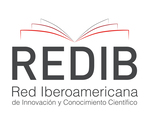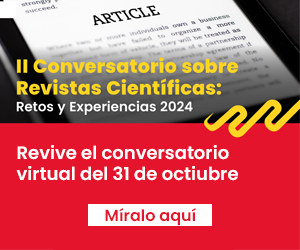Trends in the frequency of obesity in women of childbearing age. Study based on the Encuesta Nacional Demográfica en Salud (ENDES), Peru, 2005-201
DOI:
https://doi.org/10.20453/rmh.v35i1.5296Keywords:
Obesity, women´s healthAbstract
Objective: To describe the trends in the frequency of obesity and its relationship with some socioeconomic factors in women of childbearing age in Peru. Methods: Analytical cross-sectional study of secondary data, using the databases of the Encuesta Nacional Demográfica en Salud (ENDES) from 2005 to 2018. The frequency of women with obesity was estimated for each year and compared using the confidence intervals at 95% (95% CI). The magnitude of association was compared between place, age and parity, place of residence, level of education and wealth index. Results: An increase in obesity was observed in women of childbearing age from 17.72% (95% CI: 16.24-19.32) in 2005 to 32% (95% CI: 30.46-34.42) in 2018. The prevalence of type I obesity increased from 9.07% (95% CI 8.09-10.16) in 2005 to 22.15% (95% CI 15.19-16.48) in 2018. It was observed a continuous increase in the prevalence of type II obesity from 2.34% (95% CI 1.84-3.05) to 7.29% (95% CI 3.75-4.52). In women who were pregnant at the time of the interview, a prevalence of obesity was found to be 17.21% (95% CI 11.42-25.10) in 2005, reaching 38.61% (95% CI 20.25). -28.46) in 2018. A significant relationship was found between the possibility of being obese with age and parity. Conclusions: The prevalence of obesity in women of childbearing age in our country is high and continues to increase over time. The increased prevalence also occurs in pregnant women, increasing maternal-perinatal complications.
Downloads
References
Hoppe W. Tendencias de obesidad en mujeres en edad fértil. Estudio poblacional basado en la ENDES, Perú, 2005-2015. [Tesis de Maestría]. Lima: Universidad Peruana Cayetano Heredia; 2021 [citado 17 de septiembre de 2022]; Disponible en: https://repositorio.upch.edu.pe/handle/20.500.12866/11225
World Health Organization. The Global Health Observatory [Internet]. WHO. [citado 4 de junio de 2018]. Disponible en: http://www.who.int/gho/mortality_burden_disease/en/
Global, regional, and National comparative risk assessment of 84 behavioural, environmental and occupational, and metabolic risks or clusters of risks, 1990–2016: a systematic analysis for the Global Burden of Disease Study 2016. Lancet [Internet]. [citado 4 de junio de 2018]. Disponible en: https://www.thelancet.com/journals/lancet/article/PIIS0140-6736(17)32366-8/fulltext
Lozano R, Gómez-Dantés H, Garrido-Latorre F, Jiménez-Corona A, Campuzano-Rincón JC, Franco-Marina F, et al. La carga de enfermedad, lesiones, factores de riesgo y desafíos para el sistema de salud en México. Salud Publica Mex. diciembre de 2013;55(6):580-94.
Whitelaw DC, O’Kane M, Wales JK, Barth JH. Risk factors for coronary heart disease in obese non-diabetic subjects. Int J Obes. julio de 2001; 25(7):1042.
Manson JE, Willett WC, Stampfer MJ, Colditz GA, Hunter DJ, Hankinson SE, et al. Body Weight and Mortality among Women. N Engl J Med. 14 de septiembre de 1995;333(11):677-85.
Stoll BA. Teenage obesity in relation to breast cancer risk. Int J Obes. noviembre de 1998; 22(11):1035-40.
McLaughlin T, Abbasi F, Kim HS, Lamendola C, Schaaf P, Reaven G. Relationship between insulin resistance, weight loss, and coronary heart disease risk in healthy, obese women. Metabolism. julio de 2001; 50(7):795-800.
Manrique H. Impacto de la obesidad en la salud reproductiva de la mujer adulta. Rev Per Ginecol Obstet. octubre de 2017;63(4):607-14.
Zain MM, Norman RJ. Impact of obesity on female fertility and fertility treatment. Womens Health (Lond). marzo de 2008;4(2):183-94.
Kiddy DS, Hamilton-Fairley D, Bush A, Short F, Anyaoku V, Reed MJ, et al. Improvement in endocrine and ovarian function during dietary treatment of obese women with polycystic ovary syndrome. Clin Endocrinol (Oxf). enero de 1992;36(1):105-11.
Aguilar-Cordero MJ, Baena García L, Sánchez-López AM. Obesidad durante el embarazo y su influencia en el sobrepeso en la edad infantil. Nutr. Hosp. 2016; 33:18-23.
Fitzsimons KJ, Modder J, Greer IA. Obesity in pregnancy: risks and management. Obstet Med. junio de 2009; 2(2):52-62.
Farías M. Obesidad materna: severo problema de salud pública en Chile. Rev Chil Obstet Ginecol. 2013; 78(6):409-12.
Poterico JA, Stanojevic S, Ruiz P, Bernabe-Ortiz A, Miranda JJ. The Association between Socioeconomic Status and Obesity in Peruvian Women. Obesity (Silver Spring). noviembre de 2012; 20(11):2283-9.
Diez-Canseco F, Saavedra-Garcia L. Programas sociales y reducción de la obesidad en el Perú: reflexiones desde la investigación. Rev Peru Med Exp Salud Publica. 23 de marzo de 2017; 34(1):105-12.
PERÚ Instituto Nacional de Estadística e Informática [Internet]. Encuesta Demográfica y de Salud Familiar-ENDES. [citado 17 de septiembre de 2022]. Disponible en: https://proyectos.inei.gob.pe/endes/
Instituto Nacional de Estadística e Informática. Encuesta Demográfica y de Salud Familiar. Diseño muestral [Internet]. Disponible en: https://proyectos.inei.gob.pe/endes/recursos/endes2008_disenomuestral.pdf
CDC. Centers for Disease Control and Prevention. 2022 [citado 25 de febrero de 2024]. Defining Adult Overweight and Obesity. Disponible en: https://www.cdc.gov/obesity/basics/adult-defining.html
Obesity in Pregnancy: ACOG Practice Bulletin, Number 230. Obstet Gynecol. 1 de junio de 2021; 137(6):e128-44.
Lisonkova S, Muraca GM, Potts J, Liauw J, Chan WS, Skoll A, et al. Association Between Prepregnancy Body Mass Index and Severe Maternal Morbidity. JAMA. 14 de noviembre de 2017; 318(18):1777-86.
The Lancet Gastroenterology Hepatology. Obesity: another ongoing pandemic. Lancet Gastroenterol Hepatol. 2021 Jun; 6(6):411. doi: 10.1016/S2468-1253(21)00143-6.
World Health Organization. Controlling the global obesity epidemic [Internet]. [citado 17 de septiembre de 2022]. Disponible en: https://www.who.int/activities/controlling-the-global-obesity-epidemic
Pineda Soto VI, del Socorro Estrada Oré EL. Comparación de tres modelos de etiquetado nutricional frontal de productos industrializados en Perú, 2019. Perspect Nut Hum. junio de 2020; 22(1):35-45.
Ministerio de Salud. Decreto Supremo que aprueba el Reglamento de la Ley N° 30021, Ley de Promoción de la Alimentación Saludable. Decreto Supremo N° 017-2017-SA. [Internet]. [citado 17 de septiembre de 2022]. Disponible en: http://busquedas.elperuano.pe/normaslegales/decreto-supremo-que-aprueba-el-reglamento-de-la-ley-n-30021-decreto-supremo-n-017-2017-sa-1534348-4/
Angelantonio ED, Bhupathiraju SN, Wormser D, Gao P, Kaptoge S, Gonzalez AB de, et al. Body-mass index and all-cause mortality: individual-participant-data meta-analysis of 239 prospective studies in four continents. Lancet. agosto de 2016; 388(10046):776-86.
Chu SY, Bachman DJ, Callaghan WM, Whitlock EP, Dietz PM, Berg CJ, et al. Association between obesity during pregnancy and increased use of health care. N Engl J Med. abril de 2008; 358(14):1444-53.
Downloads
Published
How to Cite
Issue
Section
License
Copyright (c) 2024 Revista Médica Herediana; Wolfgang Hoppe , Carlos Hidalgo

This work is licensed under a Creative Commons Attribution 4.0 International License.
Authors assign their rights to the RMH so that may disseminate the article through the means at their disposal. The journal will provide forms of affidavit of authorship and authorization for the publication of the article, which shall be submitted with the manuscript. Authors retain the right to share, copy, distribute, perform and publicly communicate their article, or part of it, mentioning the original publication in the journal.



















